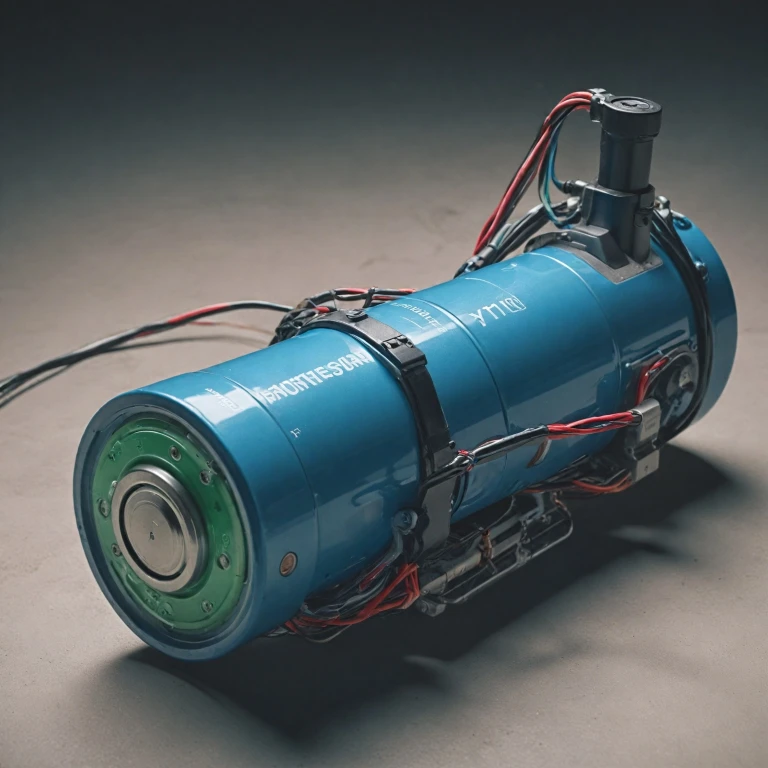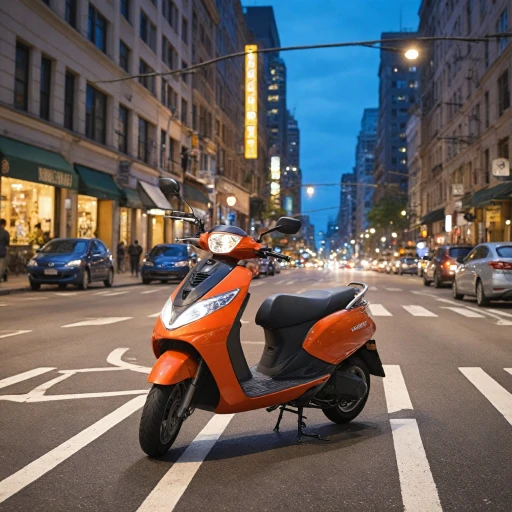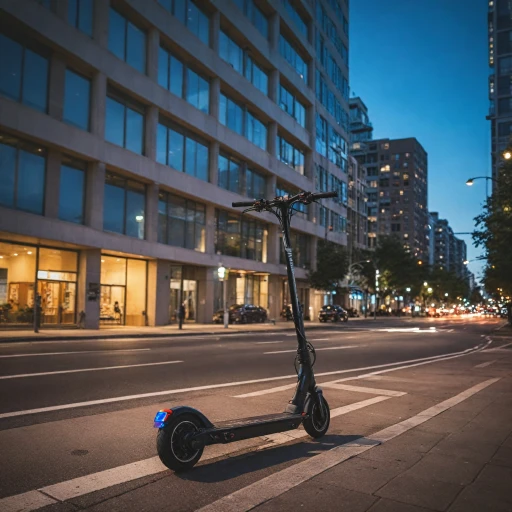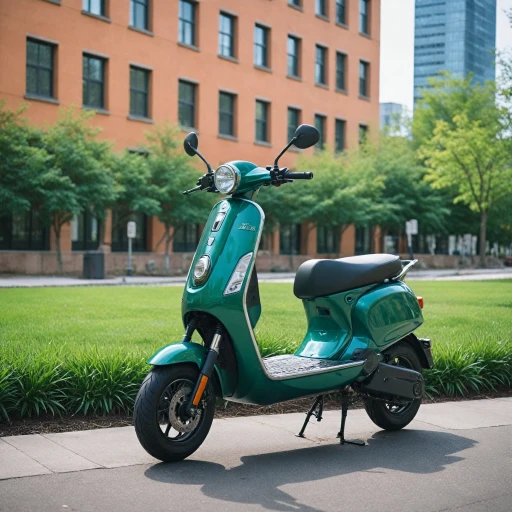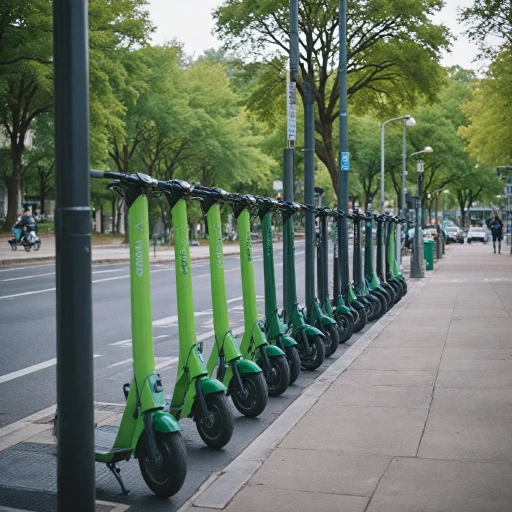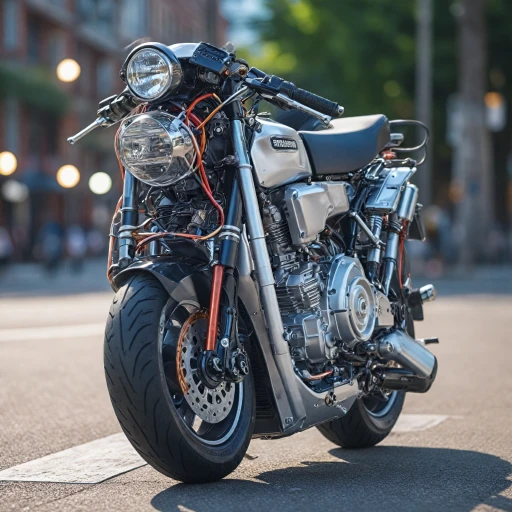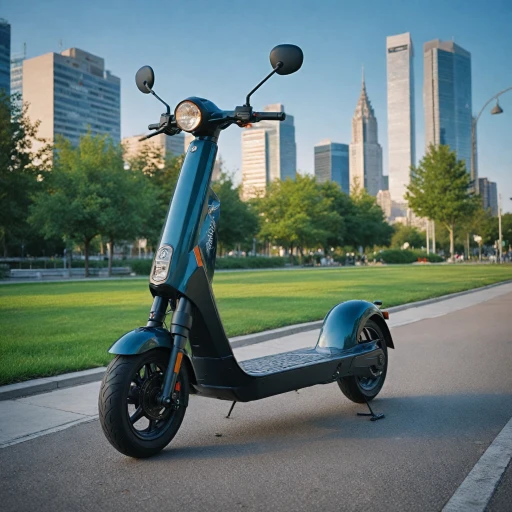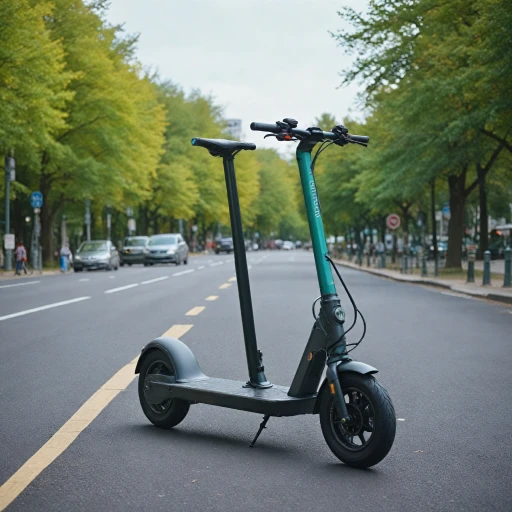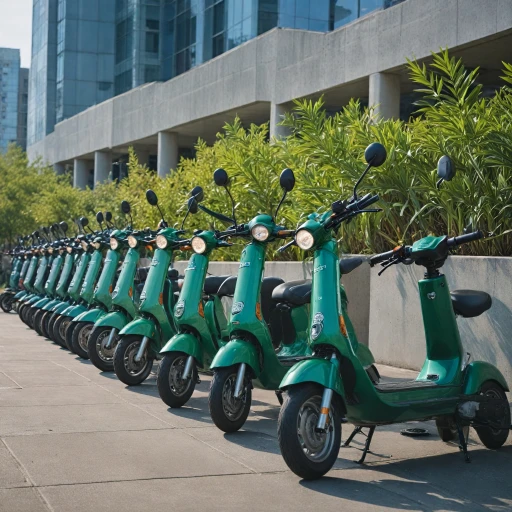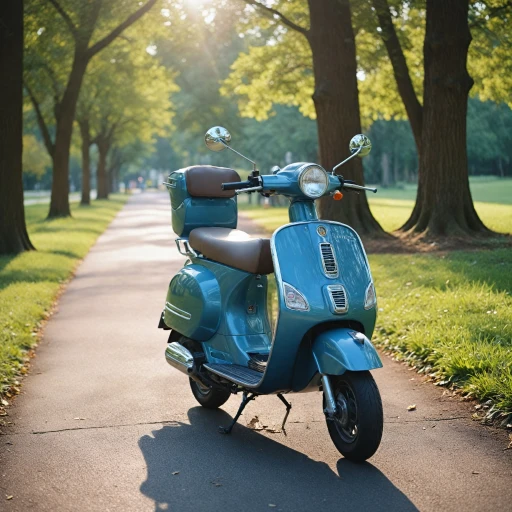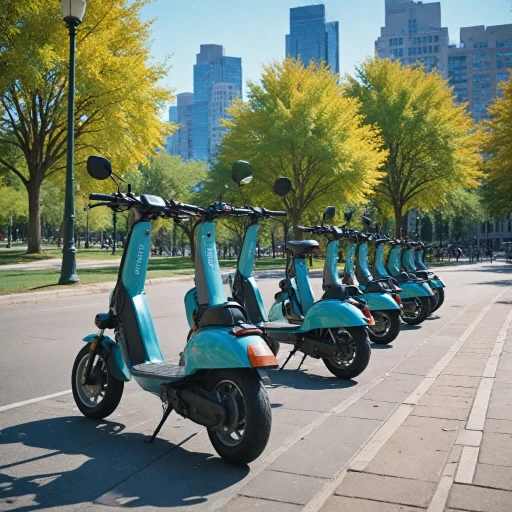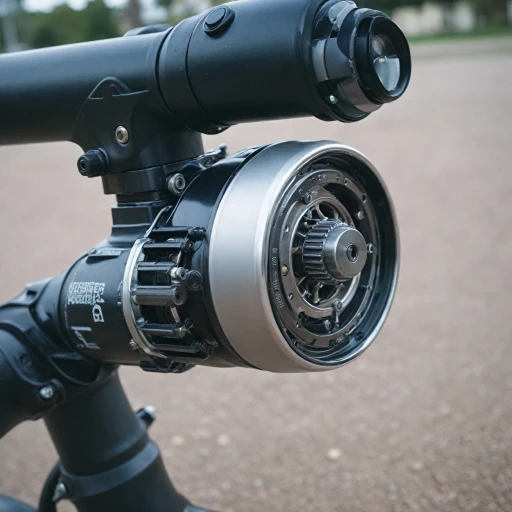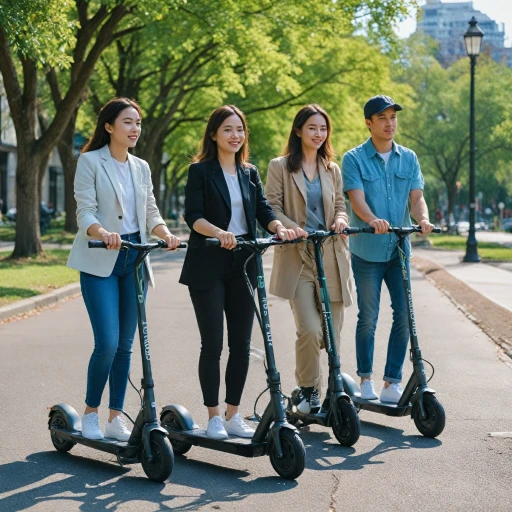
Types of Electric Scooter Batteries
Exploring Different Battery Types in Electric Scooters
The electric scooter market is powered by a variety of battery types, each offering distinctive features that cater to diverse needs. Understanding these nuances is vital for anyone looking to invest in an electric scooter. Here's a breakdown of the most common battery types you'll encounter:- Lead Acid Batteries: Often found in older models or budget-friendly scooters, lead acid batteries are known for their affordability and relatively simple technology. They are composed of lead plates submerged in sulfuric acid, generating power through chemical reactions. Although economical, these batteries are typically heavier and have a shorter lifespan compared to other types.
- Sealed Lead Acid (SLA): A sealed variant of traditional lead acid batteries, SLA batteries are designed to prevent leakage, thus requiring less maintenance. Despite being an improved version, the weight and shorter lifespan remain a consideration when evaluating overall scooter performance and longevity.
- Lithium-ion Batteries: Dominating the modern electric scooter landscape, lithium-ion batteries offer numerous advantages. They are lighter in weight, charge more efficiently, and present a significantly improved energy density—resulting in longer battery life and enhanced scooter performance. The higher initial unit price reflects these benefits, but lower long-term maintenance cost makes them a popular choice.
- Nickel Metal Hydride (NiMH) Batteries: While less common today, NiMH batteries serve as a middle ground—offering a decent balance between cost, weight, and performance. However, their decline in popularity is due to advancements in lithium technology.
How to Maintain Your Electric Scooter Battery
Essential Tips for Prolonging Your Battery's Lifespan
Proper maintenance of electric scooter batteries is crucial to ensure optimal performance and longevity. While "original" sealed lead acid (SLA) and lithium-ion batteries are commonly used, understanding their care can save both time and money. Here are some key strategies to help extend the life of your scooter battery:
- Keep it Clean: Regularly inspect and clean your battery and its connectors. Dirt and build-up can hamper the current flow and, over time, potentially damage the battery.
- Avoid Extreme Temperatures: Battery longevity can be profoundly affected by temperature extremes. It's advisable to store your scooter in a shaded, room-temperature environment when not in use.
- Consistent Charging Habits: To "save" the battery’s life cycle, adopt a regular charging routine. Do not wait for the battery to be completely drained before charging, as this can reduce the overall lifecycle.
- Monitor Charge Cycles: Pay attention to the number of charge cycles, especially for SLA and lithium-ion batteries. These batteries have a limited number of cycles before their efficiency declines.
- Monthly Check-ups: Undertake "month"-long checks of your battery pack and its conditions to catch issues early on.
Following these maintenance tips can help ensure that your battery, whether a lead acid group volt battery or a newer unit like a lithium-ion, delivers consistent power and performance for "miles" to come. For "free" shipping offers and "regular price" comparisons on replacement batteries, consider browsing platforms like "Amazon," which often provide detailed insights into battery options.
To delve deeper into understanding battery brands and exploring strategies to extend your scooter's battery lifespan, check out more expert insights on this comprehensive guide.
Charging Techniques for Longevity
Effective Charging Practices for Maximizing Battery Life
Charging your electric scooter battery properly can have a significant impact on both its longevity and overall performance. Unlike traditional lead acid batteries, modern scooter batteries often come as sealed units, which offer the convenience of maintenance-free operation. However, even with these modern advancements, certain charging practices are crucial to enhance your scooter's performance.
When it comes to charging, using a charger that matches the volt capacity of your battery is key. For instance, if your scooter operates with a 12-volt sealed lead acid battery (SLA), using a charger specifically designed for 12-volt batteries is essential to prevent any potential damage. Overcharging or undercharging can both lead to a reduced lifespan of the battery pack.
Here are some helpful strategies to ensure you are prolonging your battery's life:
- Charge Regularly: Unlike what many may think, continuously letting your electric scooter's battery drain to zero before recharging it isn't beneficial. Aim to charge your battery frequently after use, even if the battery is not fully depleted. This practice can save battery health in the long term.
- Avoid Extreme Temperatures: Both high and low temperatures can adversely impact battery life. Try to keep your scooter battery stored in a moderate environment when charging or not in use.
- Check the Charger: Make sure the charger itself is functioning correctly. An irregular current from a faulty charger can severely affect battery health.
Ultimately, understanding these charging nuances will not only enhance your ride but also contribute to efficient battery utilization. Remember, following these charging techniques closely complements the other maintenance practices required for optimal battery life in electric scooters.
Impact of Battery Capacity on Scooter Performance
Battery Capacity and Performance Impact
Understanding the link between battery capacity and the overall performance of your electric scooter is crucial for any scooter enthusiast. A scooter's battery capacity, often measured in ampere-hours (Ah), determines how much energy the battery can store and, ultimately, how far you can travel on a single charge. Electric scooters generally come with different types of battery packs, including sealed lead acid (SLA) batteries, which are more affordable but heavier, often impacting the scooter’s miles per charge and weight in lbs. Alternatively, lithium-ion batteries offer greater energy efficiency and longer battery life but at a higher price point. The choice of battery affects not only the scooter’s range but also its performance and how often you'll need a battery replacement. One of the key performance indicators influenced by battery capacity is the scooter's range. Higher capacity batteries allow for longer journeys without the need to recharge frequently, making them ideal for commuters who need reliability over long distances. This efficiency may come at a regular price that reflects enhanced technology and better materials, often leading to a higher unit price when buying these high-performance batteries. Furthermore, the type of current the battery uses also plays a role. While traditional lead acid batteries may rely on alternating current (AC), modern electric scooters tend to use direct current (DC) for more efficient power delivery. A volt sealed battery, for instance, can provide a consistent current necessary to maintain the scooter's speed and performance. Having detailed knowledge about your scooter's battery pack can save you both time and money. Brands and retailers, including those offering Amazon free shipping, provide various options, yet it is essential to ensure the compatibility and group volt requirements match your scooter's specifications. These decisions not only prolong battery life but also help you avoid frequent battery replacements, maintaining optimal electric scooter performance over the months.Environmental Considerations and Battery Disposal
Environmental Responsibilities and Disposal Strategies
When it comes to electric scooters, environmental impact is often a significant concern. The batteries that power these scooters play a pivotal role in this regard. Particularly, lead acid batteries, which are traditionally used in a wide range of applications, including scooters, present some environmental challenges. These sealed lead acid (SLA) batteries are known for their durability and cost-effectiveness, but their disposal requires careful consideration. Lead acid batteries contain lead, which is a toxic metal, and the improper disposal of such batteries can contribute to environmental contamination. It's essential for users to follow proper recycling procedures to mitigate these risks. Many local governments and communities offer free battery recycling programs, providing a responsible way to dispose of old or malfunctioning batteries without harming the environment. Beyond environmental considerations, proper scooter battery disposal also protects human health. The release of lead into the soil or water sources can be harmful, making it critical for users to have their old scooter batteries managed by certified disposal centers. In recent years, there's been a shift towards more sustainable battery technologies. Electric scooter manufacturers are exploring new options with lower environmental footprints and longer battery life. Innovations in battery technology are promising to save both the environment and costs for consumers in the long run, hinting at a future where eco-friendly alternatives are more readily available at a comparable price to traditional options. Understanding the implications of battery capacity on scooter performance is also essential. Higher capacity batteries, often measured in volt and weight lbs, generally offer more miles per charge but may come with a higher initial unit price. The balance between performance, cost, and environmental impact is crucial as consumers weigh their options for electric scooters. By opting for responsible disposal and staying informed about advancements in battery technology, consumers can contribute positively to environmental sustainability while enjoying the benefits of their electric scooters.Future Innovations in Electric Scooter Battery Technology
Innovative Trends in Battery Technology
The landscape of electric scooter batteries is rapidly evolving, with promising innovations on the horizon. Manufacturers and researchers are actively exploring new technologies aimed at enhancing battery performance, lifespan, and sustainability. Here’s a closer look at some of these advancements:- Solid-State Batteries: Unlike current lithium-ion batteries, solid-state versions replace the liquid electrolyte with a solid one. This results in greater energy density, improved safety, and shorter charging times. This can significantly change the dynamics of how we use and maintain scooter batteries, possibly making a transition from the regular sealed lead acid batteries to more efficient options.
- Graphene-based Batteries: Graphene is being investigated for use in electric scooters due to its excellent conductivity and flexibility. Graphene batteries could provide faster charging and a longer lifespan. Although the current price for graphene-enhanced batteries is higher, economies of scale might make them more affordable in the future, similar to how SLA batteries are priced today.
- Recyclable and Eco-friendly Materials: With growing environmental awareness, there's a push towards developing batteries with materials that can be easily recycled. This effort not only aims to reduce landfill waste but also to save resources and minimize the environmental impact of battery disposal.
- Smart Battery Management Systems: Modern battery packs are now incorporating advanced management systems that optimize performance and extend battery life. These systems provide real-time data on factors like current charge, temperature, and voltage, ensuring optimal battery health. Their development is crucial to achieving higher mileage and efficiency.
- Flexible Design Options: Looking to the future, modular battery designs are becoming popular. These designs allow users to swap out individual cells or entire battery packs to adapt their scooters to specific needs, be it extending range or reducing weight lbs.
